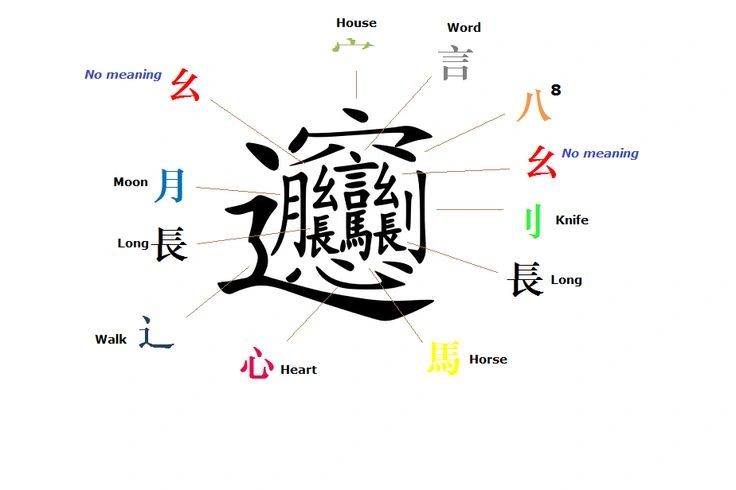This is the most difficult of all Chinese characters that anyone has seen, including the billions of human beings reading worldwide.
The character biáng (𰻞) is a fascinating piece of linguistic history. It’s not just a difficult character in terms of its complexity but a unique aspect of Chinese culture, blending both linguistic challenge and culinary delight. The fact that it's not found in most dictionaries is a testament to how distinct and specialized it is. It has a reputation for being a "monster" because of its 57 strokes, making it nearly impossible for most people—even native speakers—to write it perfectly without practice. The creation of such characters speaks to the historical and regional diversity within the Chinese language.
What’s particularly interesting is how this seemingly obscure character is tied to something as simple and universally loved as food. Biángbiáng noodles, named after the character, are famous for their broad, hand-pulled noodles that are chewy and flavorful, a signature dish of Shaanxi province. It's a beautiful example of how language evolves around the environment and culture it’s shaped by. A single character like biáng captures the essence of a specific place, its people, and their ways of living, eating, and communicating.
In the bigger picture, this illustrates the deep connection between language and the natural world. Languages like Chinese hold within them centuries of history, stories, and meanings that go far beyond just communicating. They are ways of recording and interpreting the world around us, and sometimes, the complexity of a single word or character can make us appreciate the richness of that world even more.
Do you feel that such quirky aspects of language, like the biáng character, serve as a bridge to understanding a culture on a deeper level? Or does it seem like a fun linguistic oddity?
Anyone involved in studies will be amazed by the quirks of the language. No one has ever seen a Chinese character so complicated that even native speakers struggle to write it. Meet “biáng” (𰻞)—a 57-stroke monster of a character used in the name of a delicious dish called biángbiáng noodles, which is a famous meal from Shaanxi, China.
This character is so tricky that it’s not even in standard dictionaries! It’s made up of multiple radicals, and yet, it represents something as simple as a bowl of delicious hand-pulled noodles.
Our languages are a key component in the call of the wild. Words deepen the understanding of what is seen, and what is seen comes more vividly to life through the words used to describe it. As the natural world and all the time spent in it diminish in the face of modern life, it’s more vital than ever to recall it into being with the magic of languages.
But here’s the fun part—how did this character develop? Was it created as a challenge? An April Fools' joke? Or does it have a deeper meaning?

